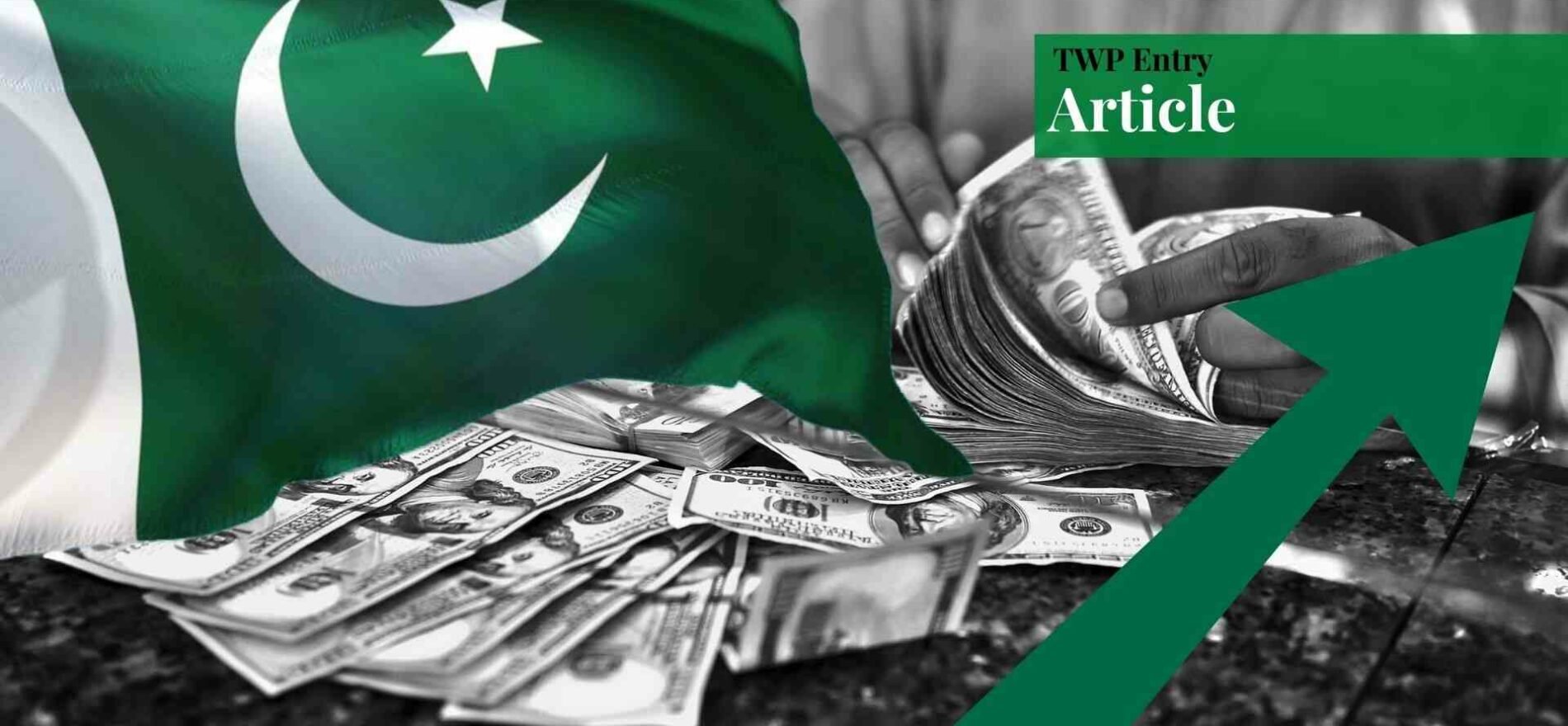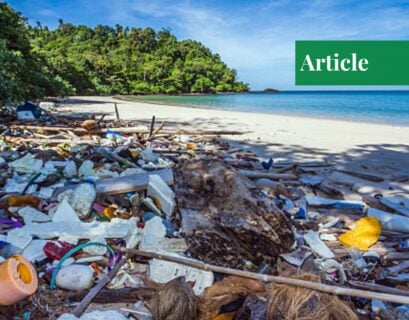Ms Faryal Khan is a pharmacist by profession.
Pakistan’s Debt Composition and Its Creditors
Pakistan is facing a significant economic challenge in the form of external debt, and the country’s ability to repay its debt, advance economic growth, and avoid a default depends largely on its earnings from exports, remittances, and foreign direct investment. Pakistan’s creditors fall into four broad categories: private and commercial loans, multilateral debt, Paris Club debt, and Chinese debt.
As of December 2022, Pakistan’s external debt and liabilities amount to $126.3 billion, of which $97.5 billion is directly owed by the government to various creditors, and $7.9 billion is owed by government-controlled public sector enterprises to multilateral creditors like the World Bank, the Asian Development Bank, and the IMF.
Strategies for Boosting Pakistan’s Exports
The proficiency of Pakistan to pay back its debt and avoid default is impugned due to a current account deficit requiring external financing. Its exports, foreign direct investment, and remittances are presumed to be lower than its import bill and debt repayment pressure. To address this issue, Pakistan needs to focus on uplifting its exports by adopting various schemes such as promoting branding and marketing initiatives, diversifying export products, improving product quality, developing infrastructure, enhancing competitiveness, and strengthening trade relationships by signing free trade agreements with other countries.
Pakistan has the potential to export a diverse range of products, including sports goods, pharmaceuticals, textiles, agriculture, leather goods, information technology, energy, and chemicals. By following case studies of other countries like India, Germany, Singapore, China, and Japan, Pakistan can dig into new sectors and compete effectively in the global market.
India has diversified its export products, while Germany is known for its high-quality exports, and Singapore has a well-developed logistics infrastructure. China has been successful in boosting exports by offering subsidies and tax incentives to exporters, and Japan has promoted its exports through branding and marketing initiatives.
Reduce Corruption
In Pakistan, corruption is a vital issue that costs the country about $5.3 billion annually, equivalent to 2% of the country’s GDP. Hong Kong, Singapore, and New Zealand are among the least corrupt countries, thanks to their culture of accountability and transparency, independent judiciary systems, strong legal frameworks, and effective anti-corruption agencies.
Singapore has adopted effective measures such as educating citizens about the costs of corruption, encouraging a culture of integrity, implementing strict laws and regulations to prevent corruption, and promoting transparency in government procurement. Pakistan can gain insight from Singapore by encouraging private sector involvement and strengthening asset recovery mechanisms, establishing a national integrity system, using technology to promote transparency, and promoting international cooperation, among others.
By following these measures, Pakistan can firm up its anti-corruption framework and reduce corruption. However, it is imperative to note that fighting corruption is a long-term process that requires sustained efforts and commitment from the government and citizens alike. Therefore, Pakistan needs to take a multi-pronged approach that includes collaboration and coordination among various institutions and stakeholders, including the private sector, civil society organizations, and the media to combat corruption effectively. Furthermore, introducing a corruption rating system and using blockchain technology can also help foster transparency and accountability in government.
Foster Innovation and Nurture New Ideas
Pakistan needs to foster innovation to stay competitive in the global economy. To achieve this, the government can create incentives for research and development, and promote collaboration between universities, businesses, and research institutions. It can also establish technology parks and incubators to promote innovation and entrepreneurship.
Besides, Pakistan needs to invest in education, support entrepreneurship, increase research and development spending, foster collaboration, establish innovation districts, create innovation challenges, focus on sustainable innovation, develop innovation hubs, foster open innovation, and invest in digital infrastructure.
Examples of profitable initiatives and areas of potential innovation in Pakistan include agriculture, information technology, renewable energy, and sustainable transportation. Thriving examples of innovation initiatives from other countries include the Station F startup campus, the Boston Innovation District, the XPRIZE Foundation, the LEGO Ideas platform, and Estonia’s digital infrastructure. The policies adopted by these countries serve as a model for Pakistan to enhance its policies.
Address Income Inequality
Pakistan faces notable income inequality with the top 10% earning much more than the bottom 10%. To tackle this issue, the government can provide social safety nets, and promote small business development, introduce progressive taxation and foreign investment. It can also address regional disparities by investing in agriculture programs and improving tax administration to reduce tax evasion.
Time banking could be a potential solution to build community connections, promote local economic activity, and reduce dependence on traditional currency. Pakistan should comprehend those countries that have policies to address income inequality such as Norway’s progressive taxation, social welfare programs, and strong labor protections, Uruguay’s universal healthcare, public education, and progressive tax system, Rwanda’s policies to promote economic growth, investment in infrastructure, and provision social safety nets, Bolivia’s land reforms, increased access to education and healthcare, and a progressive taxation system, and Slovenia’s progressive tax system, universal healthcare, and free education.
Improving Education Policy in Pakistan for Economic Growth
Improving Pakistan’s education policy is critical for the country’s economic growth, as a well-educated workforce is necessary for innovation and industry development. Pakistan faces challenges in education, including high dropout rates, low literacy rates, and limited access to education in rural areas. To address these issues, the government needs to enhance its spending on education, improve the quality of education, and focus on increasing the participation of girls in education, especially in rural areas.
Innovative teaching methods such as e-learning and distance learning programs can also be useful in reaching remote areas. By executing these measures, Pakistan can improve its education policy and potentially boost its GDP. South Korea, Finland, Singapore, and Canada are examples of countries that have invested heavily in education and reaped the benefits of economic growth.
South Korea spends a large portion of its GDP on education, while Finland has a strong focus on early childhood education and providing equal opportunities. Singapore emphasizes vocational training and lifelong learning, while Canada emphasizes access to education for all students. These policies have contributed to the highly skilled workforces of these countries and attracted foreign investment, promoting economic growth.
Reducing the Cost of Doing Business
Pakistan’s economic crisis can be addressed by reducing the high cost of doing business in the country, which can be achieved by simplifying bureaucratic procedures, providing tax incentives, improving infrastructure, and reducing energy costs. By learning from successful countries, Pakistan can create a more favorable business environment, attract more investment, and ultimately improve its economy.
Strengthening the investment climate to attract more Foreign Direct Investment (FDI) and diversifying the sources of FDI is also important for promoting economic growth, given the declining trend of FDI in recent years and concentration in a few sectors and countries of origin, which makes Pakistan vulnerable to adverse shocks.
Many countries have implemented measures to improve their business environments, such as New Zealand’s reduced regulatory burden and transparency, Singapore’s streamlined regulations and tax incentives, Denmark’s stable business environment with tax incentives and subsidies, the UAE’s attraction of foreign investment through tax incentives and investment in transportation and logistics infrastructure, and South Korea’s efforts to reduce bureaucracy and corruption and invest in innovation and technology.
Raise More Revenue
There is a need for Pakistan to raise more revenue to support critical investments and its struggles with low domestic savings and tax collection, which restrict its ability to invest in public projects. As a result, the government borrows from commercial banks, and the financial sector has limited long-term financing options, which constrains domestic financing for large investment projects. This low saving-low investment trap has reduced Pakistan’s growth potential and led to a steady decline in labor productivity and low capital accumulation, which has contributed to declining economic growth over the past decades.
Several practical steps that Pakistan can take to increase its revenue: improving tax collection by expanding the tax base and enforcing tax laws, introducing more progressive tax rates and reducing exemptions, privatizing state-owned enterprises, implementing a wealth tax, implementing a goods and services tax, and exploring non-tax revenue sources. These measures can help increase revenues, reduce government expenditures, and create a fairer and more efficient tax system.
Implement a Green Energy Policy to Create Job Opportunities
Pakistan has the contingency to become a leader in renewable energy by promoting the establishment of solar, wind, and hydroelectric power plants. The growth of renewable energy in Pakistan has capacity to create jobs in a variety of sectors, from engineering to installation and maintenance. This can stimulate job growth in related industries such as smart grid technology, energy storage, electric vehicles, and create demand for additional specialized skills, such as artificial intelligence, software engineering, and data analytics.
In Germany, the “Energiewende” policy has resulted in the creation of more than 300,000 jobs in the renewable energy sector, while Denmark has become a leader in wind power technology and has created many new jobs in the industry. In China, the rapid expansion of the solar industry has led to the creation of millions of jobs in recent years.
Boosting Pakistan’s GDP through Tourism Policy
Pakistan can enhance its economy through tourism by investing in infrastructure, promoting its cultural and natural heritage, streamlining the visa process, marketing the country as a tourist destination, and providing training to those working in the tourism industry.
Pakistan boasts a rich cultural and historical heritage with attractions such as Lahore Fort, Badshahi Mosque, Neelum Valley, Hunza Valley, and Mohenjo-daro. Various countries have implemented successful tourism policies, including Spain, Thailand, France, Italy, Japan, and Australia. These policies have led to an increase in GDP and job creation.
In Spain, for instance, the tourism industry contributed 12.3% to GDP and created 2.6 million jobs in 2019. These countries provide a blueprint for Pakistan to follow in order to enhance its GDP through tourism policy. Also the success of Pakistan’s tourism policy would depend on the government’s commitment and participation of relevant stakeholders.
Boosting Pakistan’s GDP through Microfinance Policies
A well-designed microfinance policy in Pakistan can increase GDP by promoting financial inclusion, encouraging entrepreneurship, increasing household income, supporting small businesses, and strengthening the banking sector. Bangladesh has improved its GDP through microfinance policies that provide small loans to low-income individuals, particularly women, to start small businesses and improve their livelihoods.
The success of microfinance policies in Bangladesh has inspired other countries in South Asia and Africa to implement similar policies. A study by the World Bank shows that the expansion of microfinance in Bangladesh has led to an increase in per capita income by 5-10% and has lifted millions of people out of poverty. The success of such a policy in Pakistan would depend on effective implementation and the involvement of relevant stakeholders, including the government, financial institutions, and microfinance institutions.
Conclusion
In conclusion, Pakistan’s external debt and liabilities present a significant challenge to the country’s economic stability. However, there are ways for Pakistan to address this crisis and learn from the examples of other countries. To increase its exports, Pakistan must focus on diversifying its export products, improving quality, developing infrastructure, promoting branding and marketing initiatives, and strengthening trade relationships through free trade agreements.
Additionally, the country needs to address corruption, promote innovation, and reduce income inequality to stay competitive in the global economy. It is important for Pakistan to learn from the policies implemented by other countries such as Norway, Uruguay, Rwanda, Bolivia, and Slovenia to improve its own policies and address its economic crisis. With careful planning and strategic decision-making, Pakistan can successfully manage its debt and liabilities, avoid default, and create a stable and prosperous future for its citizens.
If you want to submit your articles, research papers, and book reviews, please check the Submissions page.
The views and opinions expressed in this article/paper are the author’s own and do not necessarily reflect the editorial position of Paradigm Shift.


















